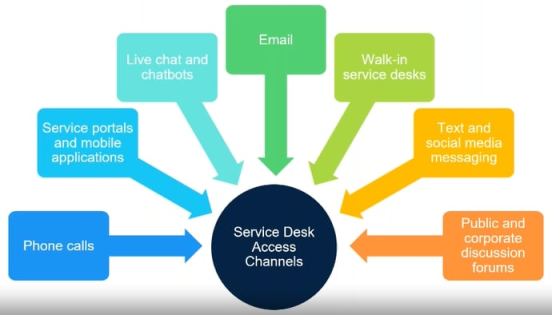IT customers’ expectations are influenced by their consumer-life experiences. They expect a range of options for communicating with retailers, service suppliers and government organizations so that they can choose the channel that is most convention to them right now. For commercial organizations, the quality of the customer experience is one of the key battlegrounds on which customers are won and lost.
Part of our Omnichannel ITSM series.
Customer experience and satisfaction should also be important considerations for corporate IT departments. Offering choice in the way IT customers engage with IT is essential to providing a modern service experience.
To do this, you need omnichannel service desk with IT support capabilities that span phone, email, web self-service, mobile, walk-in, social media, enterprise collaboration platforms, and peer support forum channels—while maintaining a single, 360-degree view of the IT customer. They want choice, but your service desk needs a joined-up view of the IT customer across all channels.
They want choice because different work contexts demand different ways of communication. For example:
- An IT customer who is in a noisy airport may prefer getting support via a live chat or chatbot on their mobile instead of trying to have a phone conversation and try to compete with hundreds of other voices.
- If the issue requires a series of technical steps they must follow, they may choose to switch from phone to a live chat option so that they have a permanent digital record for reuse in the future. (There is no automatic digital record for a phone call, unless AI-driven voice-to-text transcription is in place. Most organization do not have this technology.)
- Walk-in support is great for situations where the IT customer needs to learn how to do something on a device. In this context, a service desk agent can go through the “tell me, show me, let me” steps that mean the IT customer will really get it (first time) and not need to come back.
- In the event of a catastrophic failure that is disrupting business operations, an IT customer will want to talk to a human being, right now. They may also want to immediately escalate to a conversation with the service desk manager.
- Nowadays, a lot of work centers around enterprise collaboration tools, like Microsoft Teams or Slack. So it makes sense that a support channel or even a chatbot should be present in the collaboration tool so that people can get immediate access to services and support without leaving the digital environment in which they spend the most time working.
The range of contexts in which employees need access to services, support, or information is almost infinite. This is precisely why a service desk needs to offer a range of channels—so that they can select a channel that works for them.
By doing so, your omnichannel service desk can improve the IT customer experience, boost employee productivity, and drive an up-tick in customer satisfaction ratings (while simultaneously reducing cost, as traffic is diverted away from the expensive phone channel to lower-cost digital channels).
